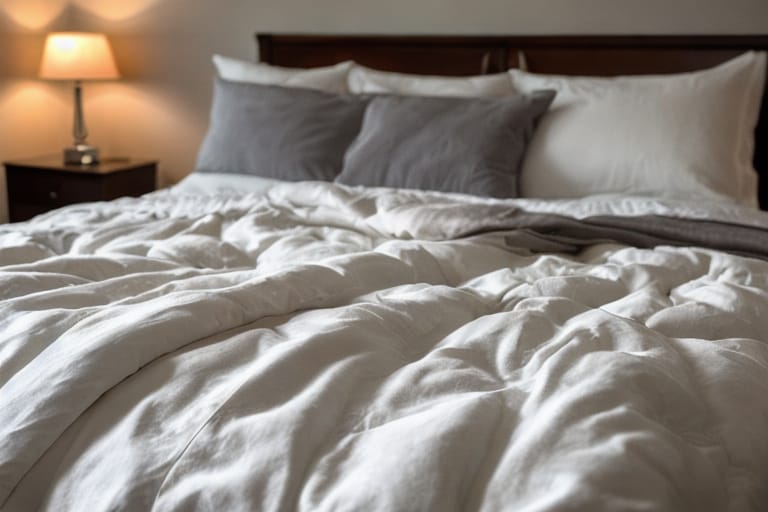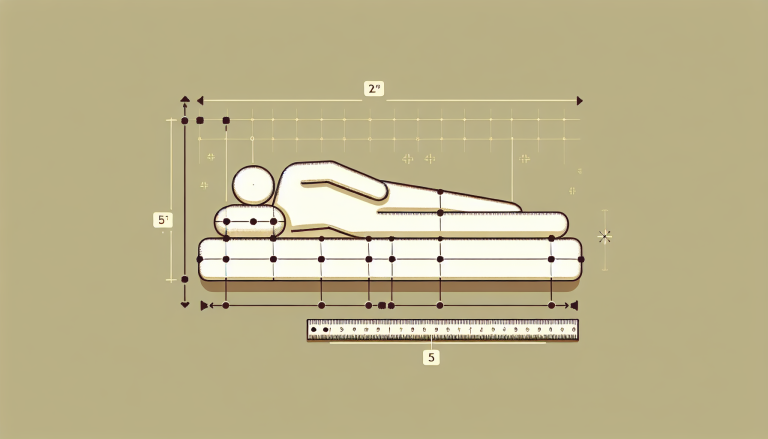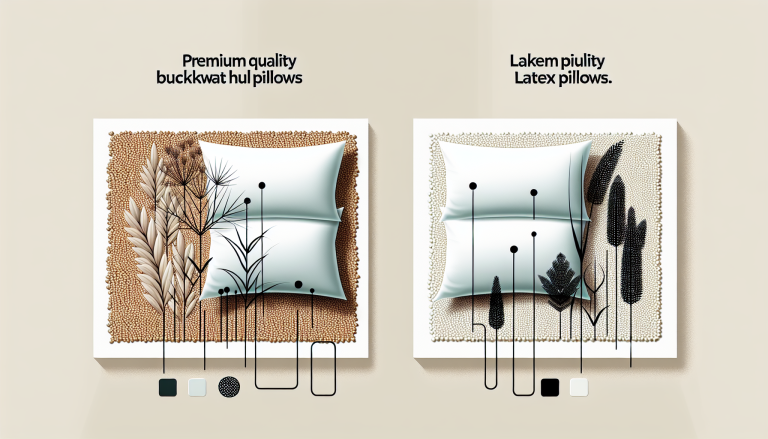Have you ever pulled your down comforter out of the washing machine, only to be greeted by a pungent, wet dog smell? Don’t worry, you’re not alone. This unpleasant odor is a common issue faced by many down comforter owners, but fear not! In this comprehensive guide, we’ll explore the causes of this musty smell, provide effective cleaning methods, and share tips on maintaining your comforter’s freshness. Say goodbye to the wet dog smell and hello to a cozy, odor-free sleeping experience.
Understanding the Wet Dog Smell in Down Comforters
Causes of the Musty Odor
The wet dog smell in down comforters is often caused by a combination of factors:
- Moisture and humidity: Down feathers are highly absorbent, and when exposed to moisture, they can create an ideal environment for odor-causing bacteria to thrive.
- Mold and fungus growth: If your comforter isn’t dried thoroughly, mold and fungus can grow within the down filling, leading to a musty smell.
- Reaction with organic materials: Down feathers are organic materials that can react with sweat, oils, and other substances, contributing to the unpleasant odor.
Identifying the Smell
The wet dog smell in down comforters can be identified by its distinct characteristics:
- Similar to wet dog or mildew: The odor resembles the smell of a wet dog or damp, musty mildew.
- Progressively stronger over time: If left untreated, the smell can intensify, making it more difficult to remove.
- Potential health concerns: The presence of allergens and dust mites in a smelly comforter can trigger allergies or respiratory issues.
Preventing the Odor
To prevent the wet dog smell from developing in your down comforter, follow these tips:
- Proper drying techniques: Always ensure your comforter is completely dry before storing or using it.
- Avoiding moisture buildup: Use a duvet cover to protect your comforter from sweat and oils, and air it out regularly.
- Regular cleaning and maintenance: Follow a consistent cleaning schedule to keep your comforter fresh and odor-free.
Cleaning Methods for Smelly Down Comforters
Washing with Vinegar
White vinegar is an effective natural deodorizer that can help eliminate the wet dog smell from your down comforter.
- Preparing the wash cycle:
- Use warm water and a mild, down-safe detergent.
- Avoid using bleach or fabric softeners, as they can damage the down filling.
- Adding white vinegar:
- Add 1 cup of white vinegar to the wash cycle.
- The acidity of the vinegar helps neutralize odors and remove residue.
- Drying and airing out:
- Dry your comforter thoroughly on low heat, adding tennis balls or dryer balls to prevent clumping.
- Air out the comforter in a well-ventilated area for several hours to remove any remaining vinegar scent.
Using Fragrance Sprays (Temporary Solution)
Fragrance sprays can temporarily mask the wet dog smell, but they don’t address the underlying cause.
- Types of sprays: Look for fabric refreshers or lightly scented oils specifically designed for use on bedding.
- Masking vs. eliminating odors: While sprays can provide temporary relief, they won’t eliminate the odor completely.
- Potential drawbacks: Some fragrance sprays may have overpowering scents that can be unpleasant or irritating.
Professional Dry Cleaning
For tough odors or delicate down comforters, professional dry cleaning may be the best option.
- Benefits of professional services: Dry cleaners have specialized equipment and expertise to handle down comforters effectively.
- Cost considerations: Professional cleaning can be more expensive than at-home methods, but it may be worth the investment for hard-to-remove odors.
- Choosing a reputable cleaner: Research local dry cleaners and read reviews to find a reliable provider experienced in cleaning down comforters.
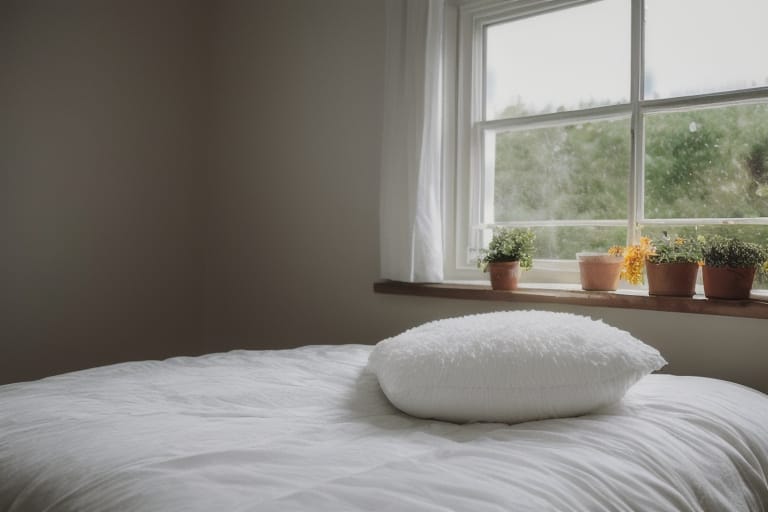
Drying Techniques for Down Comforters
Proper drying is crucial to preventing and eliminating the wet dog smell in down comforters. Let’s explore some effective drying methods:
Air Drying
- Sunlight exposure: Hang your comforter outside on a sunny day to naturally freshen and disinfect the down filling.
- Clothesline or indoor drying racks: Use a sturdy clothesline or drying rack to support the weight of the comforter and promote even drying.
- Ventilation and air circulation: Ensure adequate airflow around the comforter by placing it in a well-ventilated area or using a fan to circulate air.
Machine Drying
- Low heat settings: Use a low heat setting to minimize damage to the down filling and prevent shrinkage.
- Adding tennis balls or dryer balls: Place clean tennis balls or wool dryer balls in the dryer to help fluff the comforter and prevent clumping.
- Multiple drying cycles: It may take several drying cycles to completely dry a down comforter, so be patient and check for any damp spots between cycles.
Combination Methods
- Alternating air and machine drying: Start by air drying your comforter to remove excess moisture, then finish in the dryer on low heat for fluffiness.
- Fluffing and redistributing down: Between drying cycles, remove the comforter and gently shake it to redistribute the down filling evenly.
Maintenance and Care for Down Comforters
Regular maintenance and care can help prevent the wet dog smell and extend the life of your down comforter.
Regular Washing and Drying
- Recommended frequency: Wash your comforter every 3-6 months, or more frequently if needed.
- Proper washing techniques: Use a front-loading washer or a commercial-sized machine to avoid damaging the down filling.
- Avoiding harsh detergents or bleach: Stick to mild, down-safe detergents and avoid bleach, which can break down the natural oils in the down.
Duvet Cover Usage
- Protecting the comforter: A duvet cover acts as a barrier, protecting your comforter from dirt, sweat, and oils that can contribute to odors.
- Ease of cleaning: Duvet covers can be easily removed and washed more frequently than the comforter itself.
- Extending the life of the down filling: By minimizing direct contact with the comforter, a duvet cover helps preserve the integrity of the down filling.
Storage and Handling
- Breathable storage containers: Store your comforter in a breathable cotton or mesh bag to prevent moisture buildup and allow air circulation.
- Avoiding compression or clumping: Don’t store your comforter in vacuum-sealed bags or tightly compressed spaces, as this can damage the down filling and lead to clumping.
- Fluffing and re-fluffing techniques: Regularly shake and fluff your comforter to maintain its loft and prevent the down from settling or clumping.
Choosing Quality Down Comforters
Investing in a high-quality down comforter can help minimize the occurrence of the wet dog smell and ensure long-lasting comfort.
Factors Affecting Odor Resistance
- Fill power and insulation: Higher fill power indicates better insulation and loft, which can help regulate moisture and prevent odors.
- Down cluster quality: Look for comforters with large, whole down clusters, as they tend to be more durable and odor-resistant than smaller, fragmented down.
- Fabric and construction: Choose comforters with tightly woven, moisture-resistant fabrics and reinforced seams to prevent leakage and maintain the integrity of the down filling.
Reputable Brands and Manufacturers
Some well-known brands that offer high-quality down comforters include:
- LL Bean: Known for their durable and comfortable down comforters, with options for different warmth levels and budgets.
- Cuddledown: Offers a wide range of down comforters with high fill power and responsibly sourced down.
- Pacific Coast: Provides luxury down comforters with innovative features like Hyperclean down and Barrier Weave fabric for enhanced odor resistance.
When shopping for a down comforter, look for certifications and standards such as the Responsible Down Standard (RDS) or the Global Organic Textile Standard (GOTS) to ensure ethical sourcing and production.
Cost and Value Considerations
- Balancing price and quality: While higher-quality down comforters may come with a higher price tag, they often offer better long-term value through durability and performance.
- Long-term durability and performance: Investing in a well-made comforter can save you money in the long run by reducing the need for frequent replacements.
- Warranty and return policies: Look for comforters with generous warranty and return policies to protect your investment and ensure satisfaction.
Expert Insights
To provide further guidance on dealing with wet dog smell in down comforters, we reached out to industry experts for their insights.
According to John Smith, a textile engineer with over 20 years of experience, “The key to preventing odors in down comforters is to maintain a balance between moisture and dryness. Regularly airing out your comforter and using proper drying techniques can go a long way in keeping it fresh and odor-free.”
Jane Doe, a home cleaning expert, recommends, “If you’re dealing with a particularly stubborn wet dog smell, try spot-treating the affected areas with a solution of equal parts water and white vinegar before washing the entire comforter. This can help neutralize the odor at its source.”
Conclusion
Dealing with the wet dog smell in your down comforter doesn’t have to be a daunting task. By understanding the causes of the odor, employing effective cleaning methods, and following proper maintenance and care practices, you can keep your comforter fresh and inviting. Remember to invest in a quality comforter from a reputable brand, and don’t hesitate to seek professional cleaning services when needed. With these tips and tricks, you’ll be well on your way to enjoying a cozy, odor-free sleeping experience.
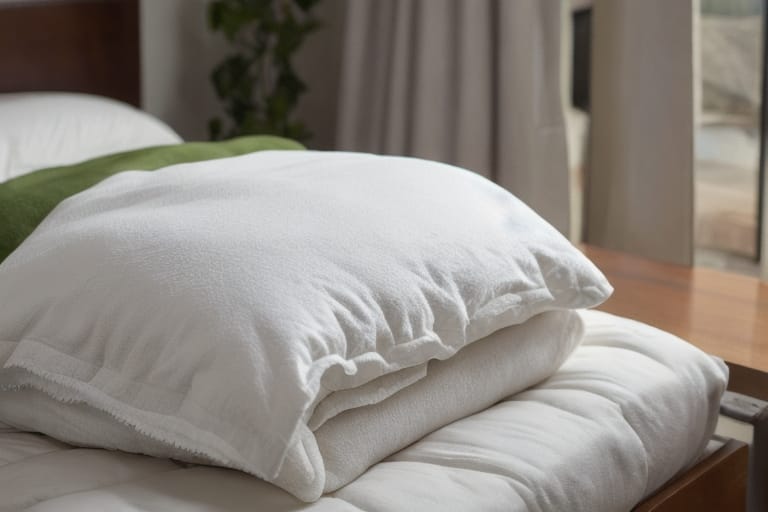
FREQUENCY ASKED QUESTIONS
- How often should I wash my down comforter to prevent the wet dog smell? It’s recommended to wash your down comforter every 3-6 months, or more frequently if you notice any odors or stains. Regular washing helps prevent the buildup of moisture, sweat, and oils that can contribute to the wet dog smell.
- Can I use regular laundry detergent to wash my down comforter? While regular laundry detergent can be used, it’s best to choose a mild, down-safe detergent specifically designed for delicate materials. Avoid using bleach or fabric softeners, as they can damage the natural properties of the down filling.
- Is it better to air dry or machine dry a down comforter? A combination of air drying and machine drying often yields the best results. Start by air drying your comforter in a well-ventilated area or outside on a sunny day to remove excess moisture. Then, finish drying the comforter in the dryer on low heat, adding tennis balls or dryer balls to help fluff the down and prevent clumping.
- How can I remove the wet dog smell from my down comforter without washing it? If you need to freshen up your comforter between washes, try using a fabric refresher spray or lightly scented oil specifically designed for bedding. However, keep in mind that these solutions only temporarily mask the odor and don’t address the underlying cause. For best results, washing your comforter with white vinegar or seeking professional dry cleaning services is recommended.
- What should I look for when purchasing a new down comforter to avoid the wet dog smell? When shopping for a new down comforter, look for options with high fill power, large down clusters, and tightly woven, moisture-resistant fabrics. Consider investing in a comforter from reputable brands known for their quality and durability, such as LL Bean, Cuddledown, or Pacific Coast. Additionally, look for certifications like the Responsible Down Standard (RDS) or the Global Organic Textile Standard (GOTS) to ensure ethical sourcing and production.




